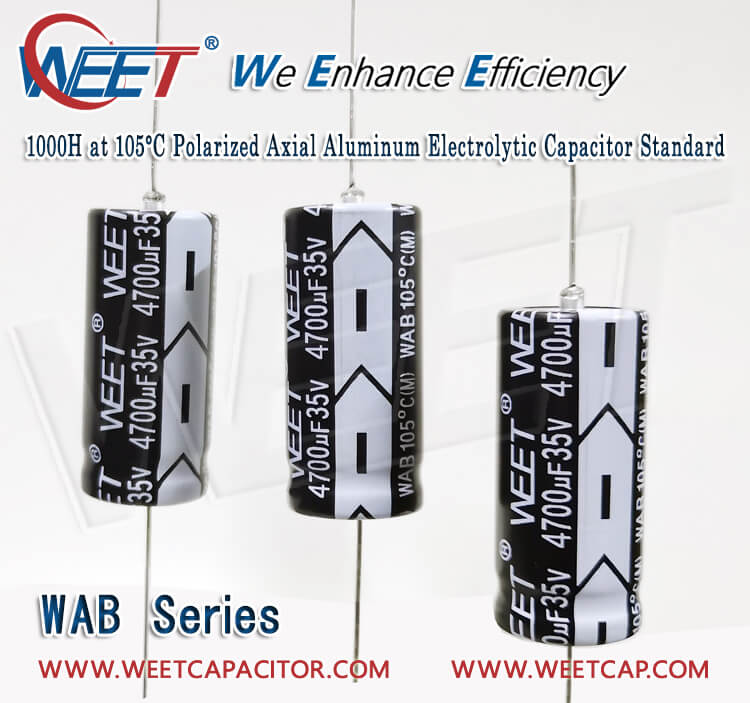WEET Judging the Polarity of Electrolytic Capacitor with Multimeter Or by External Appearance
WEE Technology Company Limited - WEE are Capacitors Specialist
The positive and negative polarity will be marked on the shell of electrolytic capacitor, and attention must be paid to its polarity in actual use, otherwise there is a risk of explosion. If the polarity of an electrolytic capacitor can not be recognized, its polarity can be judged with a pointer multimeter.
So how to identify the polarity of Electrolytic capacitor by Multimeter?
Due to the difference between positive and negative polarity of electrolytic capacitor, it has a feature of using multimeter resistance to detect it: the positive electrode is connected with black probe (positive power supply), the negative terminal is connected with red probe (negative power supply), and the leakage current of electrolytic capacitor is small (Large leakage resistance). On the contrary, the leakage current of electrolytic capacitor increases (the leakage resistance decreases).
When measuring, first assume that one pole is "+" pole, connect it with the black probe of the multimeter, and connect the other electrode with the red probe of the multimeter. Record the scale of the stop of the probe (the resistance value of the probe is large on the left side), then discharge the capacitor (i.e. the two leads touch each other), exchange the two probes, and re measure. In the two measurements, the last time the needle stays on the left (with high resistance), the black probe is connected to the positive electrode of the electrolytic capacitor.
At the same time, you can tell the polarity of WEET Axial Electrolytic capacitors by external appearance. Firstly, on one side of the lead, there is a protruding end, which is a negative pole. At the same time, the sleeve marking will has a "-" one it and arrow to one side , which is showing as negative pole.

